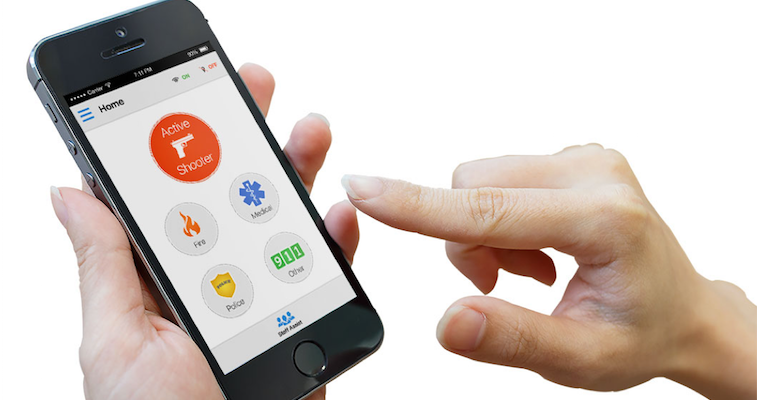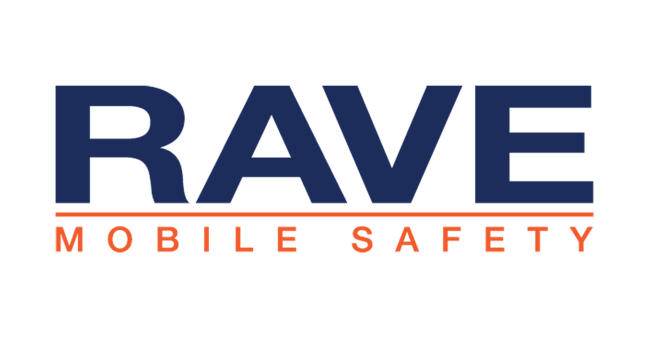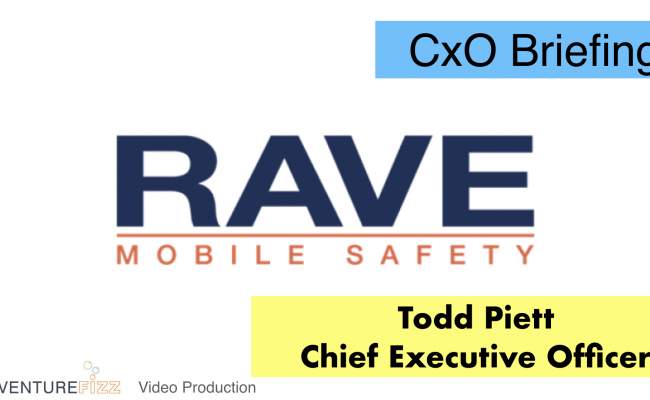You’re a football coach at an Arkansas high school. During practice, a student collapses.
You do everything you can to resuscitate him, but you need to get that student professional medical attention as fast as possible. In many cases, this can be a time-consuming process; you need to call both 911 and the nurse’s office and spend precious minutes giving them information while a student’s life hangs in the balance.
But thankfully, in this situation, such steps were unnecessary. That’s because you had access to Rave Mobile Safety’s Panic Button on your phone. All you had to do was tap the button in your app, and your phone was calling 911 on your behalf. Simultaneously, the Panic Button notified the nurse and security guard that a student just collapsed on the football field. The nurse got there before the ambulance, the ambulance got there as fast as possible, and the student was fine in the end.
“Those are the stories that will always be exciting for us—that we can say we were able to help, and that’s awesome,” Rave Mobile Safety CEO Todd Piett said.
This real-life example represents the power of the Framingham-based company, which provides its emergency communication platform to businesses, educational institutions, state & local governments, and healthcare organizations.
Getting to Today
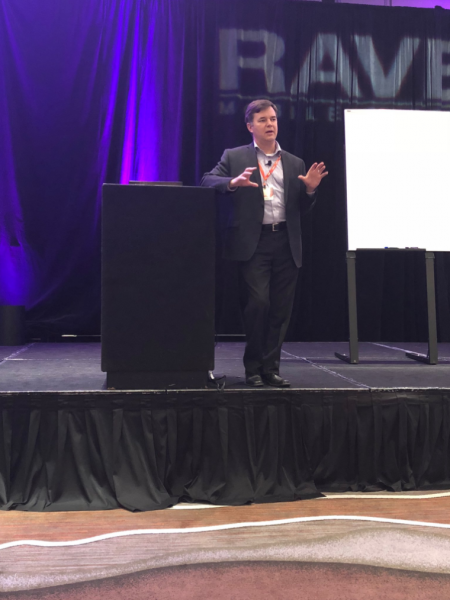
Rave Mobile Safety was originally founded as Rave Wireless in 2004. In its earliest form, it developed apps to help universities connect with their students at a time when doing so was easier said than done.
“A lot of university CIOs loved the technology because they had 10 facility management people that were easy-to-communicate with, but none of the 20,000 students were accessible. They've all unplugged the dorm phone lines because they're not willing to pay for those, and they don't answer their email, so the next thought was to engage them on their mobile phones,” Piett said. “That was the general idea that Rave was founded on: How do we better communicate to the students?”
This was a much harder task in the pre-App Store days. So for their first years on the market, Rave Wireless was selling phones and partnering with cell phone providers like Nextel to get their early applications installed on devices. As their priority was student communication, many of their applications had little to do with emergencies, like one that informs students when bills or homework are due.
In 2007, two events caused everything to change. On June 29, the first iPhone was released which, in tandem with the App Store’s launch the following year, made it possible for Rave to offer its solutions without needing to go through carriers or device makers. But an even more significant event happened on April 16: the Virginia Tech shooting.
“That was really kind of a seminal moment for university safety. All universities were looking for a way to send mass notifications to their students.” This is when they realized that mass notification could be a new focus for the company.
Rave would transition away from hardware sales and OEM-style app partnerships and towards a new, more-direct platform. They focused their offerings on emergency communication and mass notification, and in the years since, expanded these offerings to include K-12, local governments, state governments, enterprises, and 911 services. They also changed their name from Rave Wireless to Rave Mobile Safety.
Piett who was appointed as CEO last August has been with the company since 2005, when he joined as VP of Marketing. Prior to Rave, Piett had nothing short of an eclectic career.
In 1990, he joined the US Army as an Aviation Officer, ensuring the safe accomplishment of missions between the United States, Korea, and Bosnia-Herzegovina. But after he spent seven years there, he found that he was “flying a desk more than flying a helicopter,” and decided to change careers. In 1999, he joined Dell, where he would have a hand in launching DellNet, the company’s first ISP program.
After, he held marketing roles at Unica and Verilytics, and in late 2004, an investor connected Piett to the founding team. After seeing significant potential in the company’s idea for a mass communication platform, the now-CEO joined and, as they say, the rest is history.
Critical Safety Technology
As it exists today, the Rave Mobile Safety platform offers a number of solutions for mass notification and emergency response. Here are a few of them:
Rave Guardian: A personal safety app that connects an organization’s members with various security resources through their smartphone. It features a panic button (more on that below), direct communication with the organization’s security staff, tip submissions, and more.
Rave Alert: A mass notification system that allows an organization to send unlimited notifications to an unlimited number of recipients from any Internet-connected device. A message can be sent in a variety of ways, including (but not limited to) a call, text, email, and/or social media post.
Rave Panic Button: With the press of an in-app button, the Panic Button simultaneously communicates an emergency to 911, on-site personnel, and first responders in a clear and concise manner.
The CEO explained that medical emergencies make up 97% of Panic Button activations, though Rave’s solutions are equipped to handle everything from medical emergencies to fires, extreme weather, active shooters, and more.
Rave 911 Suite: Provides a number of tools and capabilities to first responders and 911 telecommunicators. Smart911, for instance, allows members of an organization to preemptively offer information to first responders in case of an emergency, including addresses, medical conditions, emergency contacts, photos, and more.
“People even put pictures of their pets, which is very valuable to the responders,” Piett explained. “If you've got a 90-pound pitbull and you have a heart attack in your home, they need to make sure the police come along with them so they can get into your house safely.”
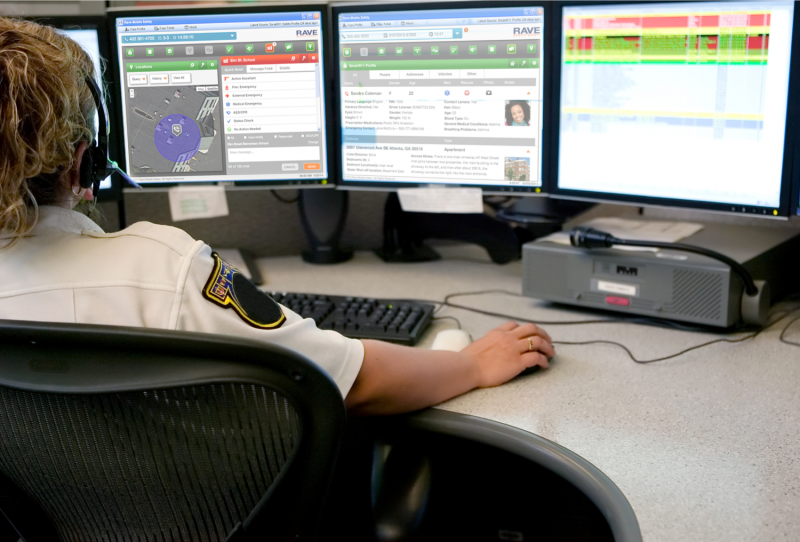
The CEO said that Rave Mobile Safety now has approximately half of the universities in the country using their system (accounting for over half of the student population) as well as 4,000 K-12 schools and 925 of the 911 call centers (and 20% of all 911 calls). On the government side, two customers include the State of Arkansas and Long Island.
The 110-employee company is growing 30-35% each year, and beyond organic expansion, they plan on making acquisitions to grow even further. Just last year they acquired two companies, including the Toronto-based emergency notification company ERMS.
Rave Mobile Safety is a company that’s using the power of technology that combines a powerful mission driven purpose, by keeping people safe and assisting with emergencies. And with the discussion surrounding safety and response growing wider every single day, they couldn’t come at a better time.
“A lot of people are looking for proven solutions to invest in,” Piett said. “It’s been a pretty busy season, and will continue to be for the foreseeable future.”
Alexander Culafi is a Staff Writer for VentureFizz. You can follow him on Twitter @culafia.

